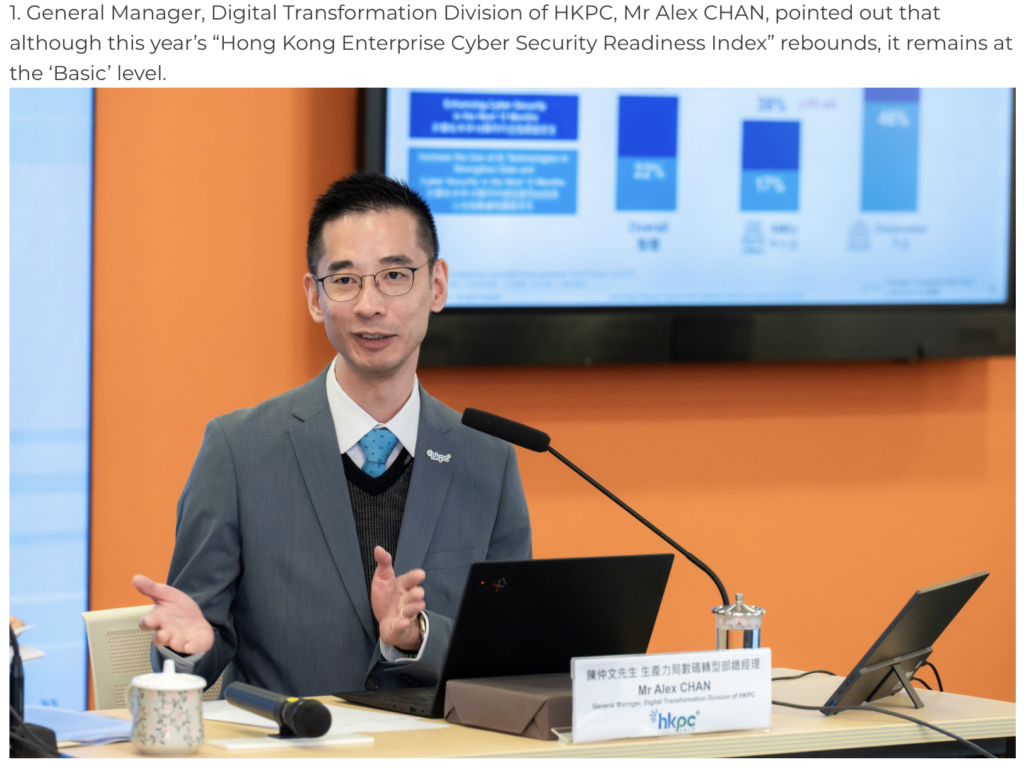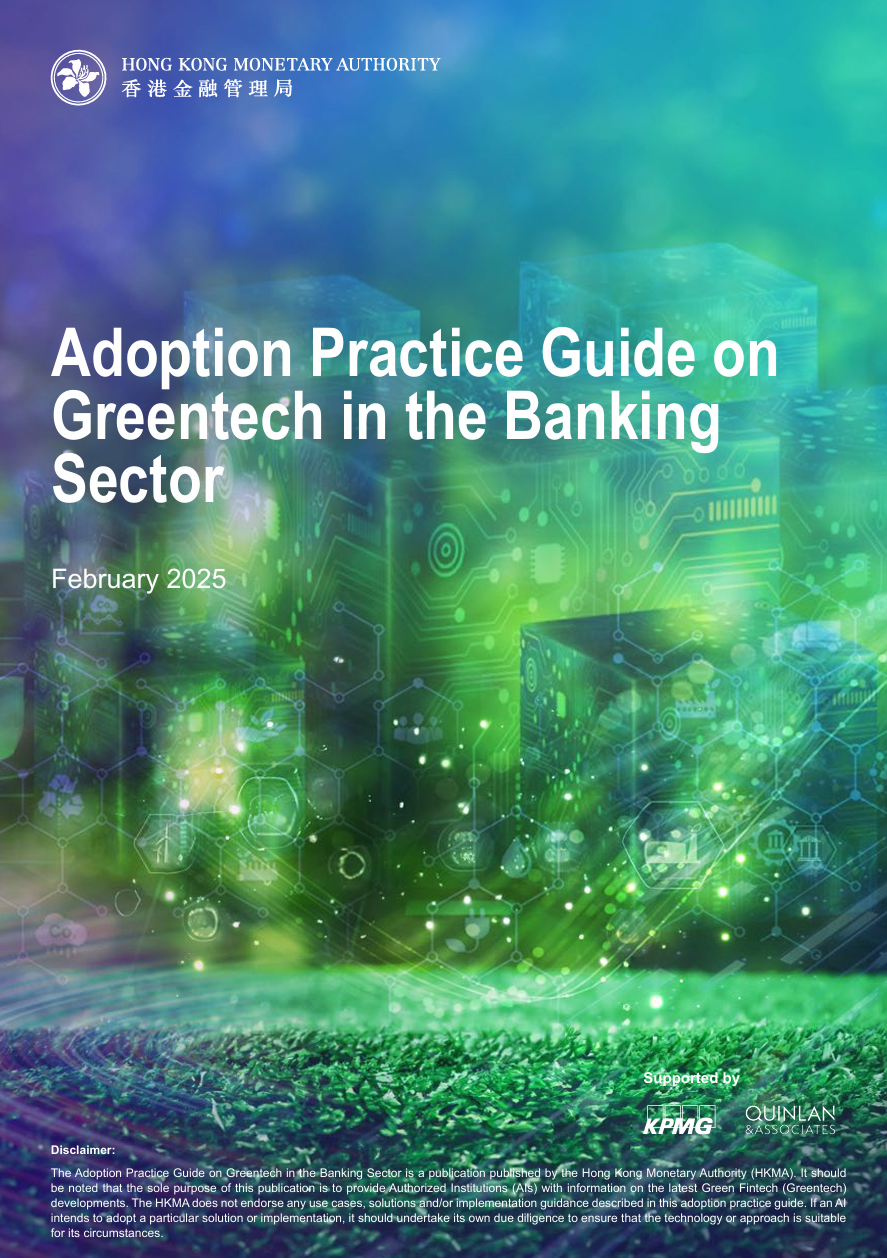
When Compliance Looks Ready—But Isn't: Why Hong Kong’s Cybersecurity Progress Is a Strategic Illusion
In the world of regulatory compliance, the most dangerous position to be in is not when you’re failing—but when you think you’re succeeding.
That’s the uncomfortable truth buried inside the 2024 Hong Kong Cyber Security Readiness Index, jointly published by the HKPC and PCPD. At first glance, the numbers look promising. The overall score went up by 5.8 points. Corporates hit an all-time high of 73.1. AI adoption is increasing. But beneath that thin statistical layer lies a far deeper fault line—one that the financial industry, in particular, cannot afford to ignore.
Because while Hong Kong enterprises may be checking more boxes, they’re still missing the mark. And if 2024 was the year of perceived improvement, 2025 may be the year of regulatory and operational reckoning.
📖 Ref: HKCERT. HKMA (2025). “Hong Kong Enterprise Cyber Security Readiness Index” Rises by 5.8 Points Approaching the Level in Year 2022 “Human Awareness Building” Remains at Low Levels

The Maturity Illusion: Why the Numbers Mislead More Than They Reveal
It’s easy to take comfort in rising scores. But for seasoned compliance professionals, the deeper interpretation is sobering. The report makes it clear that most enterprises are still operating at the “Basic” level of cybersecurity readiness, even as threats become exponentially more sophisticated.
Corporates, despite their high scores, were not spared. Over 70% experienced at least one form of cyberattack in 2024. Phishing remains the most common—and most effective—vector, affecting 98% of surveyed firms. Even more revealing, the human factor—the weakest link in the cybersecurity chain—continues to be neglected, with only one in three enterprises offering employee awareness training.
In the financial sector, this is not a minor oversight. It’s a compliance liability. Financial institutions are bound by trust, regulated by risk sensitivity, and driven by data. Yet the industry is still treating human error as a manageable nuisance rather than what it truly is: a systemic vulnerability that fuels regulatory breaches, reputational damage, and operational losses.
Financial Compliance Is Still Playing a 2018 Game in a 2025 Threat Landscape
The reality is that financial firms are still protecting yesterday’s attack surfaces with yesterday’s controls, even as adversaries shift tactics toward more dynamic, AI-powered methods. Traditional defenses like endpoint protection, firewalls, and static policies are being bypassed—not because they’re flawed, but because they’re predictable.
Meanwhile, most compliance maturity models continue to reward documentation and intention, not execution and adaptability. This is how a firm can score high on readiness while simultaneously becoming a prime target.
The lesson? Compliance programs that look good on paper are no longer good enough. Resilience is now measured not by how well you plan, but by how fast you detect, respond, and recover—especially in a sector where milliseconds matter.

AI: The Double-Edged Sword Financial Firms Are Still Underestimating
Among the report’s most telling findings is the blind spot around AI governance. While 43% of corporates are using AI in operations, only 16% have implemented response plans that account for AI-specific threats.
This is deeply problematic for financial institutions that are increasingly reliant on AI for fraud detection, credit scoring, and KYC/AML automation. These models don’t just assist in compliance—they influence regulated decisions. And when they go wrong, the consequences are regulatory, not just technical.
Yet, few institutions have implemented real safeguards against adversarial attacks, model poisoning, or synthetic identity fraud. Even fewer have mechanisms in place to explain how AI reaches its decisions—a fast-emerging requirement among global regulators.
What the report subtly signals—but what Studio AM believes will become overt policy—is a coming wave of regulatory mandates that focus on AI auditability, explainability, and traceability. Financial firms that cannot demonstrate control over their AI systems will not just be non-compliant—they will be considered irresponsible.
The SME Vulnerability Cascade: Why Smaller Players Are Now Strategic Risk Amplifiers
While larger corporates are under pressure to mature their cyber defenses, SMEs in the financial ecosystem remain dangerously exposed. The report shows that many of these firms—especially in professional services and retail finance—still fall below the 50-point mark in readiness. That’s not just a technology issue. It’s a strategic denial of how modern cyber threats operate.
Attackers no longer need to breach a major bank to cause systemic disruption. Instead, they exploit smaller, poorly defended partners—law firms, accountancies, boutique wealth advisors—and use them as entry points into more fortified environments.
This is why regulators are beginning to shift from “size-based” compliance expectations to “function- and risk-based” models. If your SME handles regulated data, facilitates financial transactions, or connects to critical infrastructure, you will be expected to meet standards on par with Tier 1 institutions.
At Studio AM, we see this trend accelerating in 2025 and beyond. SMEs will face increased scrutiny—not just from regulators, but from the larger firms that rely on them.
Compliance Is No Longer a Snapshot—It’s a Moving Target
The traditional approach to compliance—prepare for audits, pass them, and move on—is rapidly becoming obsolete. The 2024 report points toward a new paradigm: continuous compliance that adapts in real time, integrates across functions, and is deeply embedded within operational workflows.
This means:
- Cybersecurity and compliance must merge, not coexist.
- Employee behavior must be monitored and improved continuously, not annually.
- AI systems must be governed with the same rigor as any core financial system.
- Risk exposure must be recalibrated monthly, if not daily, not annually.
This is the future that the 2024 report hints at—and the future that Studio AM is already helping financial firms prepare for.

Final Thought: Compliance is No Longer Just About Regulations—It’s About Survival
The findings from the HKPC and PCPD 2024 report highlight a stark reality: cybersecurity and AI are no longer technical concerns—they are redefining the regulatory landscape for financial institutions. Attackers are no longer hacking networks—they are hacking people, AI models, and the very compliance systems meant to stop them.
For financial firms, compliance is no longer a check-the-box regulatory function—it is now a critical strategic function that determines resilience, trustworthiness, and regulatory viability. Institutions that fail to modernize their compliance strategies—especially around AI governance and human factors—won’t just risk regulatory penalties. They will become ground zero for the next wave of intelligent, invisible cybercrime.




